(Play video above for audio story on visit)
The doors to Calvenzano mercifully opened at 5:30 p.m. today, enabling the curious and devout to see the apse’s fresco, painted around 1150 A.D: “The Coronation of the Virgin Mary.”
As is typical in Italy nowadays, only seniors beat a trail to pews shortly before mass.
The relief-laden arch has seen better days, but nine scenes of Christ’s life can clearly be made out. He lived in the flesh until age 33. The top half of a beast, most likely a lion, has taken a beating. Armies belonging to the Aachen-based Holy Roman Empire imperiled north Italian communities, at times either torching or tearing down key structures, from about 875 A.D. to 1200 A.D. Afterward, Renaissance-era noble families—now mixed with German blood—began usurping among their own, beginning a whole new cycle of divide and conquer while co-existing with the Catholic Church and its powerful bishops, as if playing chess.
Calvenzano includes a monastery and rests outside Melegnano, a suburb southeast of Milan.
Only the lower half of the facade is Romanesque.
Disney characters tough out February cold along the Lambro River in Melegnano.
In Italy, imagery of the Virgin Mary is not confined to churches.
Husband and wife heed Saturday evening mass.
-30-
North Italian kingdoms quickly learned the value of castles, in this case Melegnano’s Castello Mediceo. It was built between the end of the Romanesque era through the Renaissance.

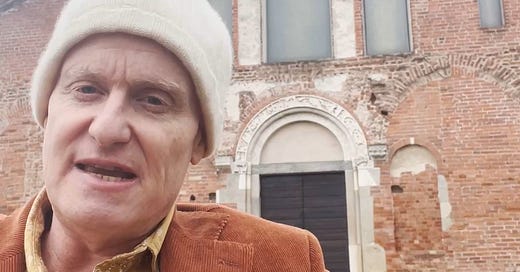


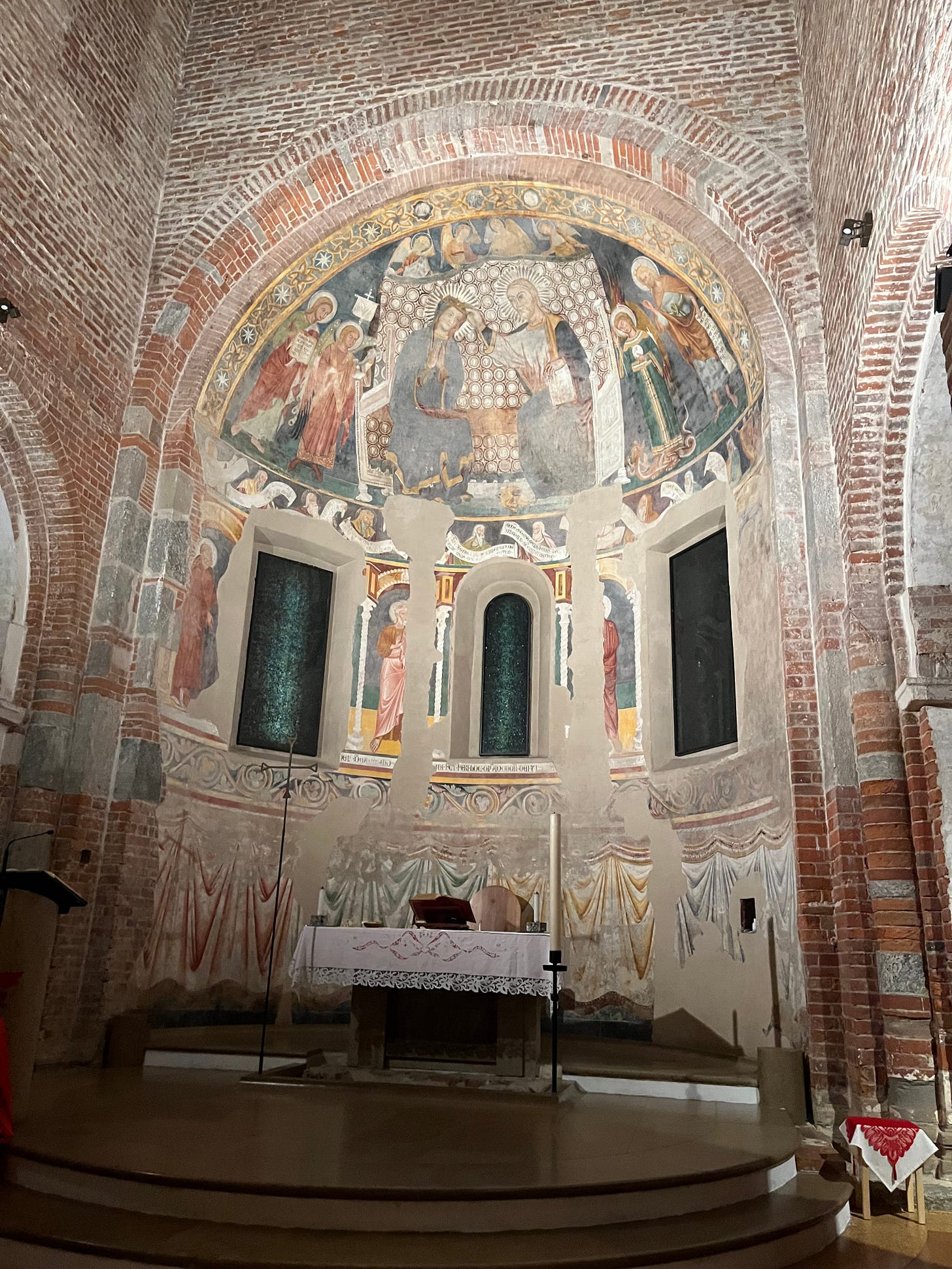
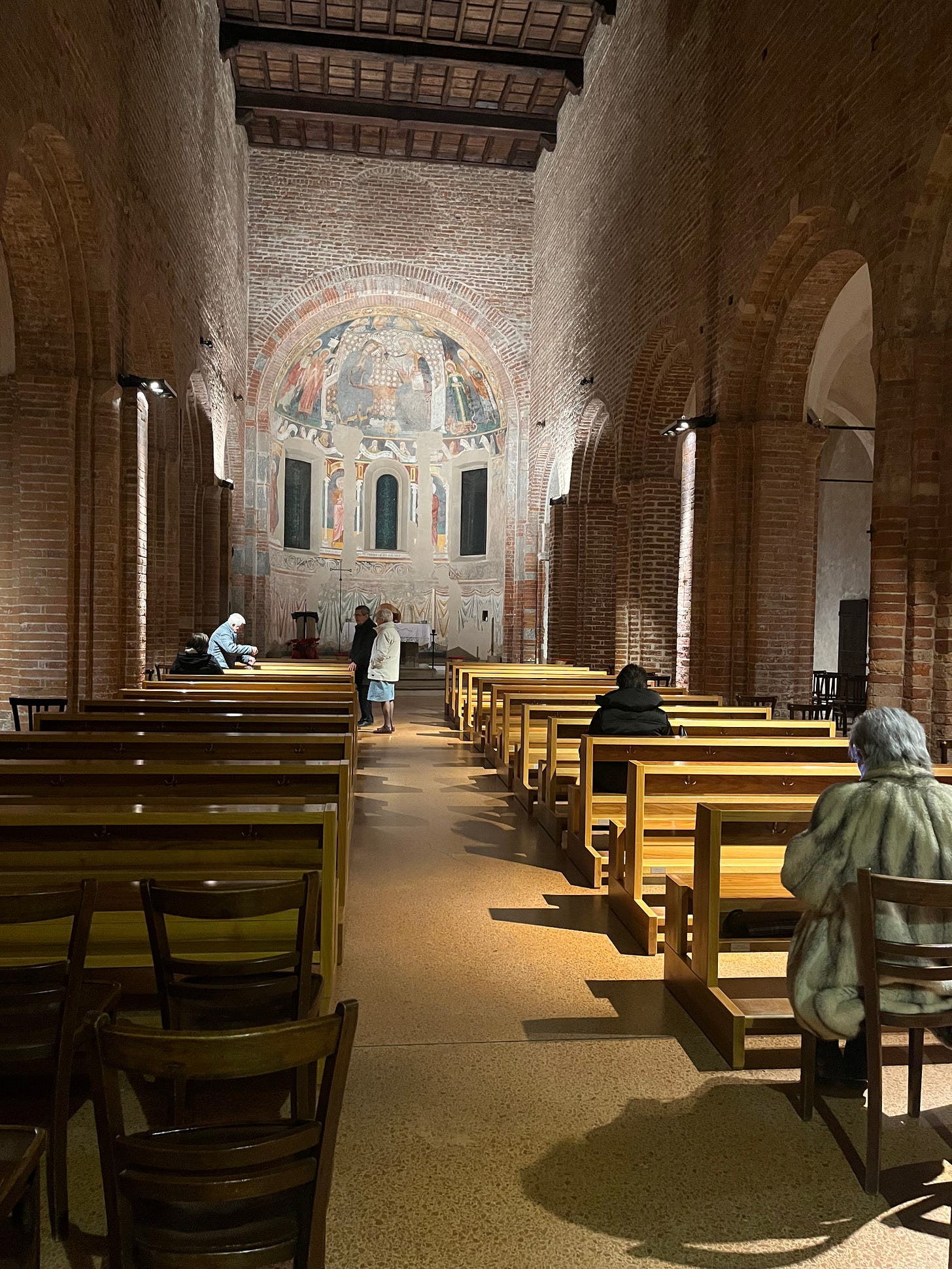

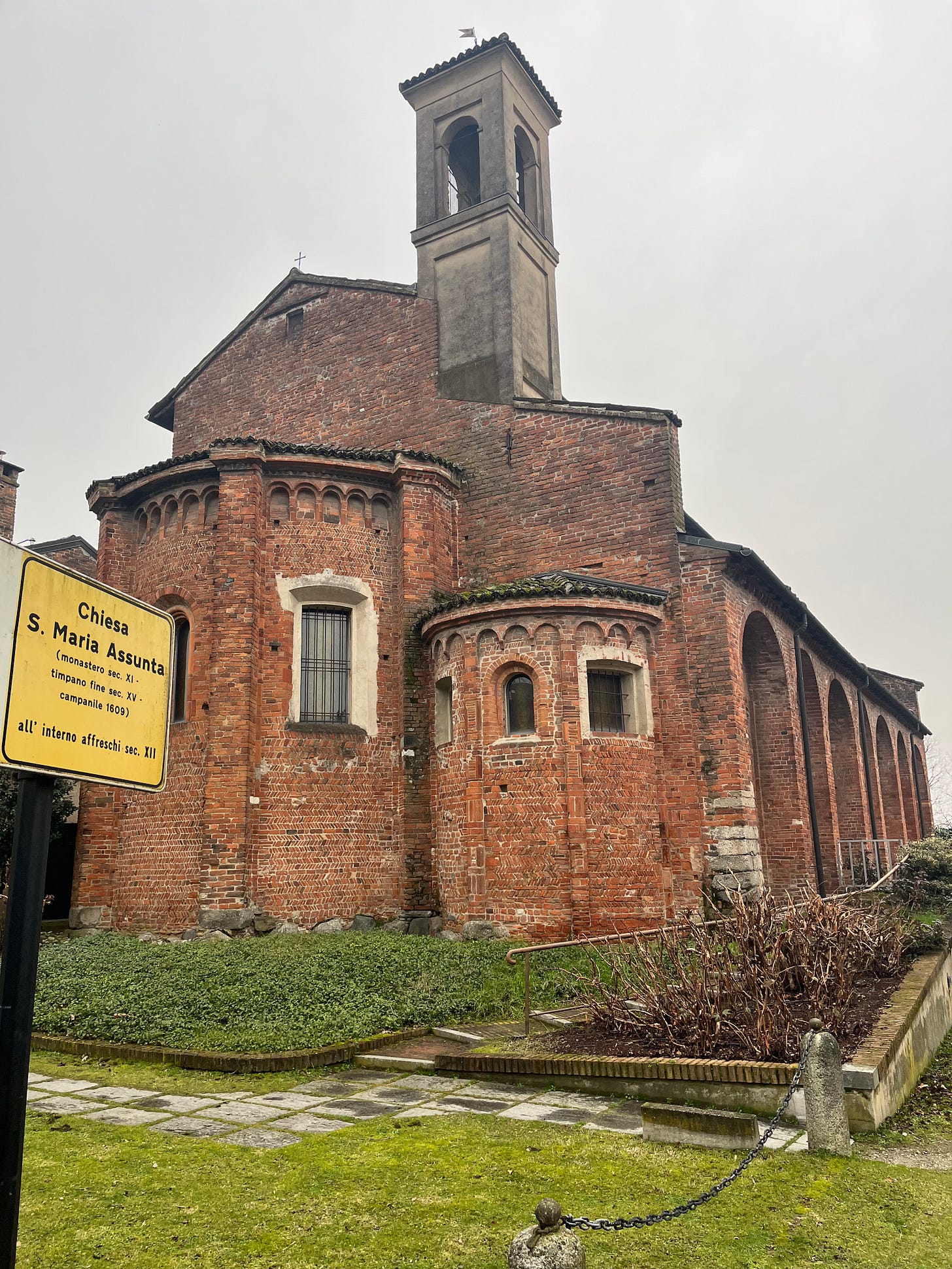
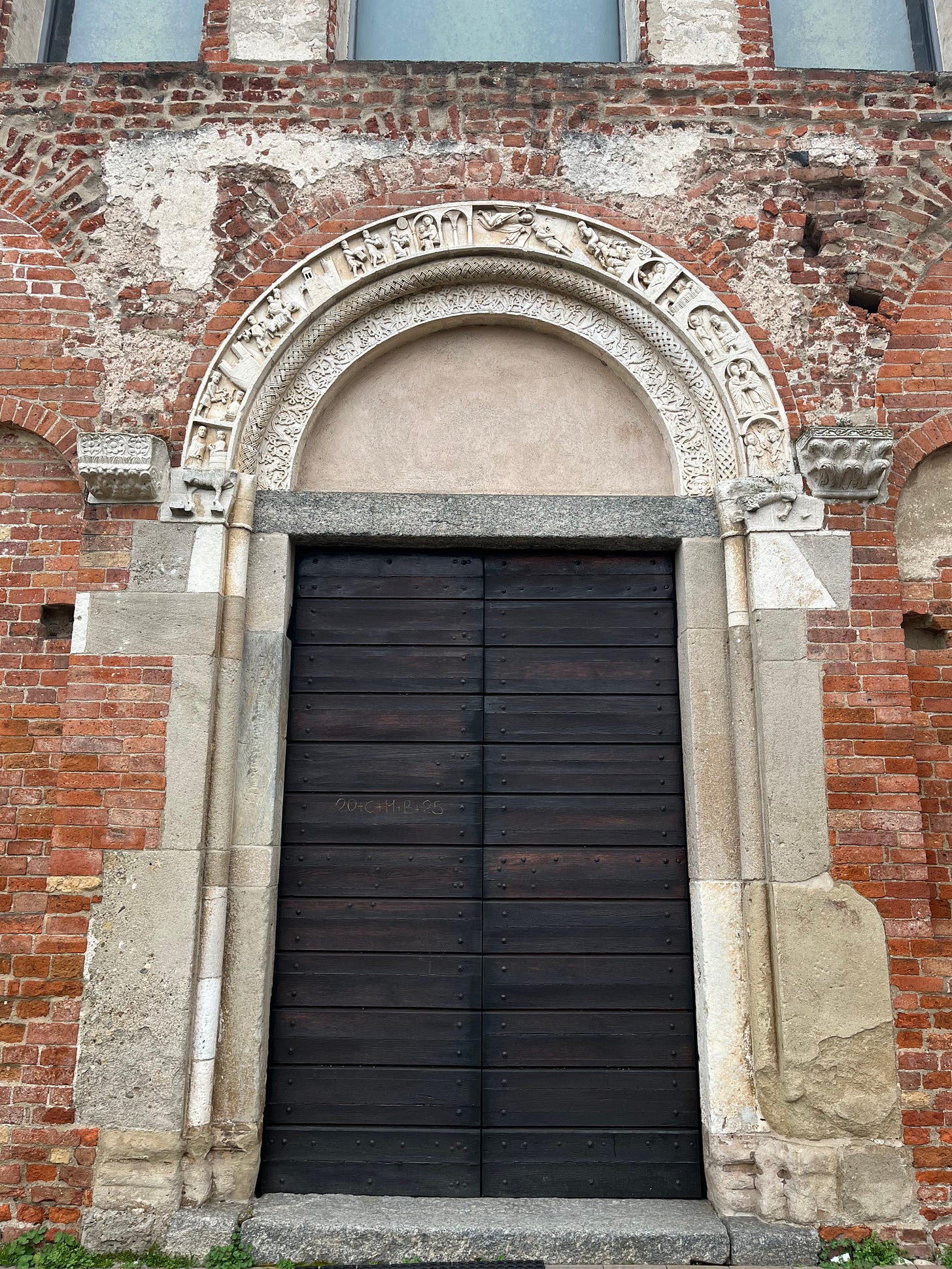
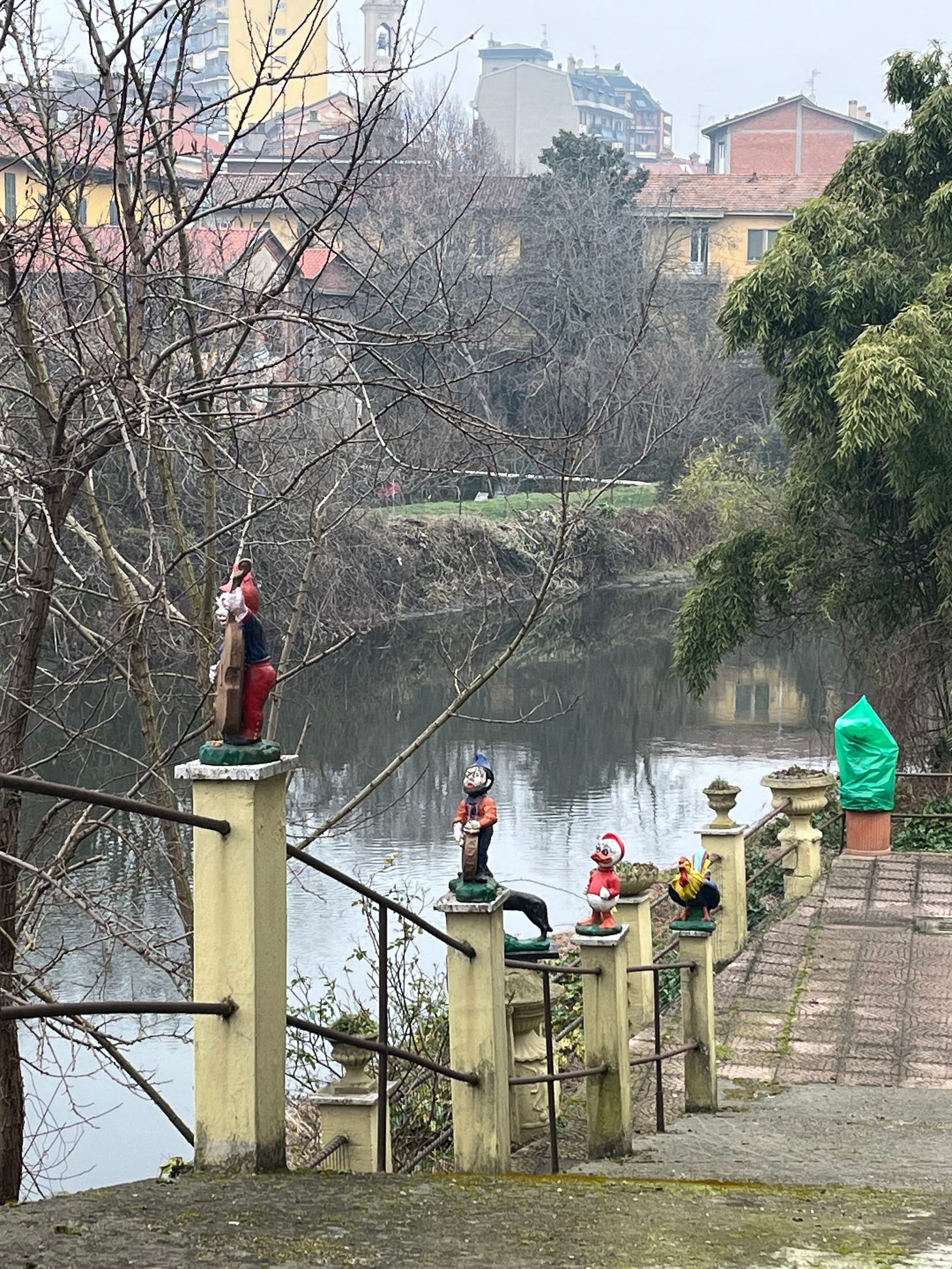
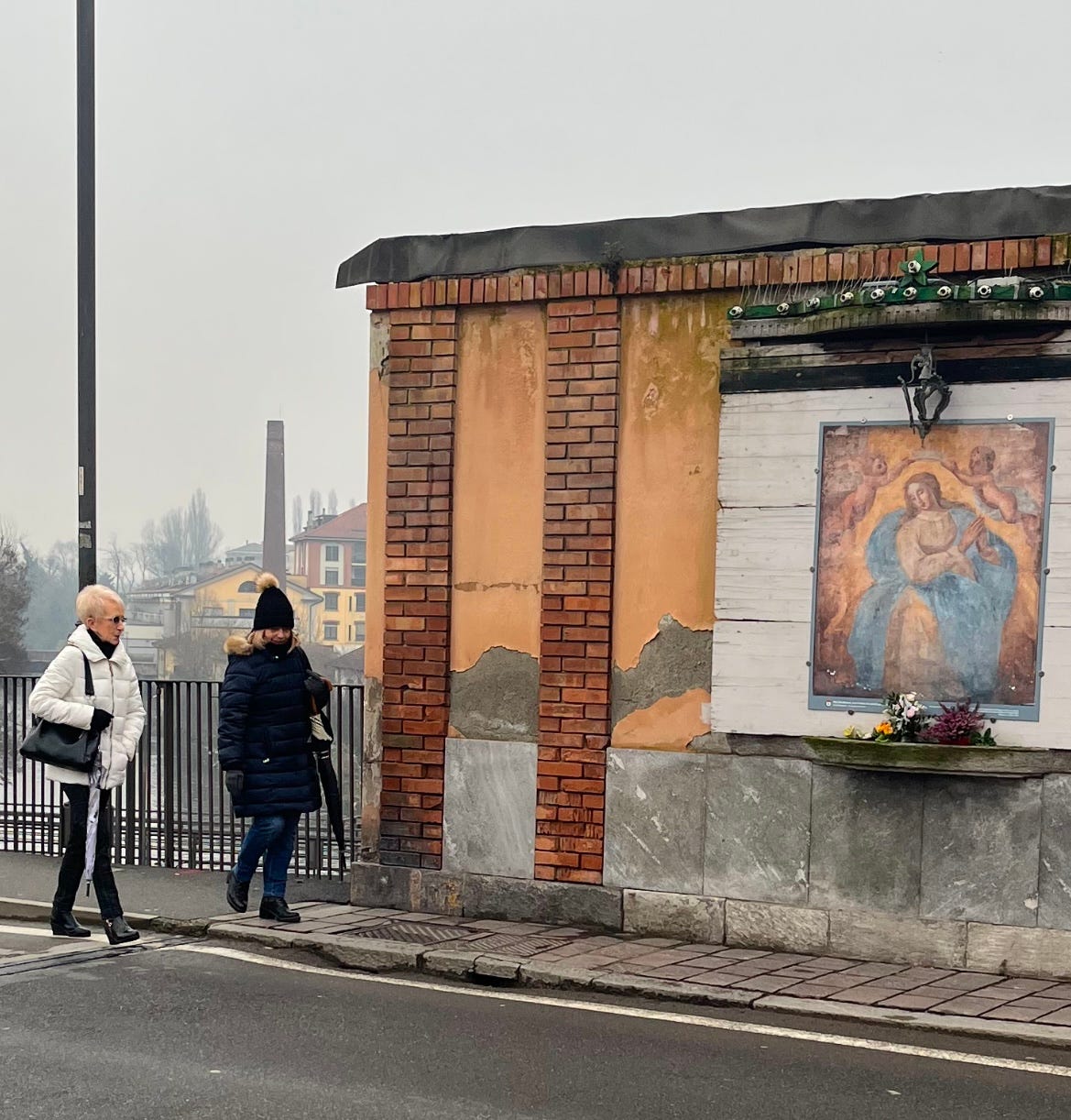
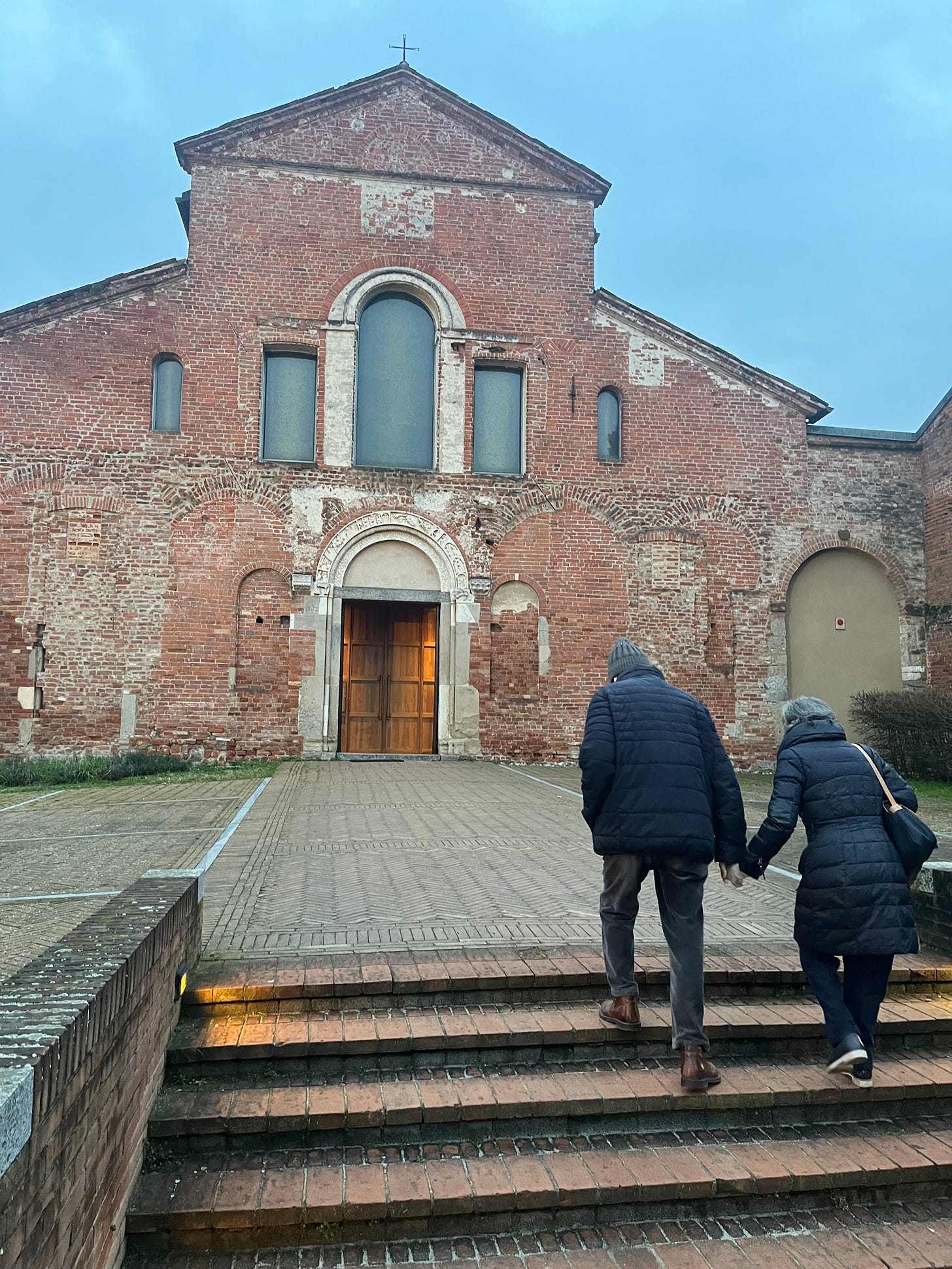
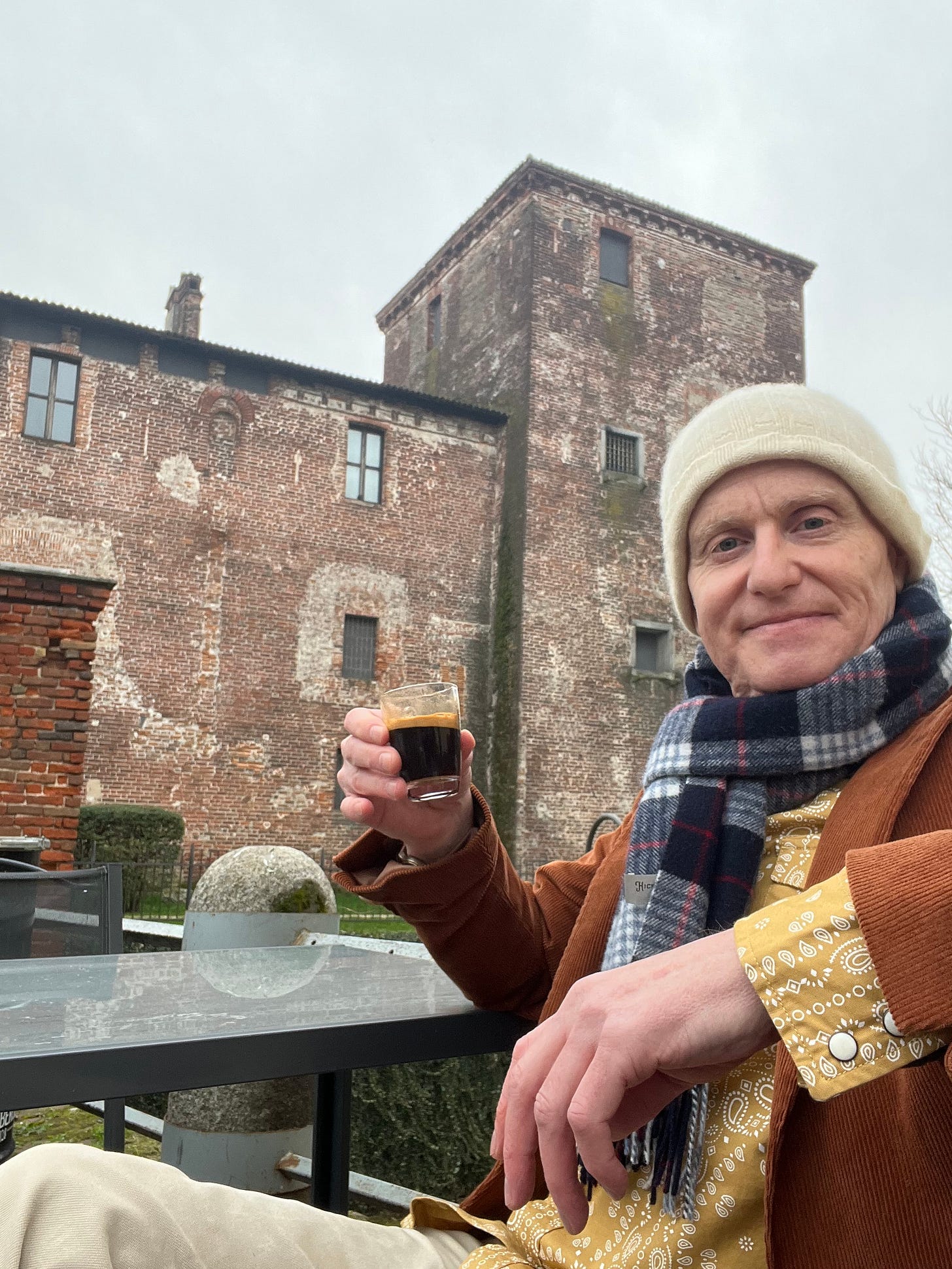



Share this post